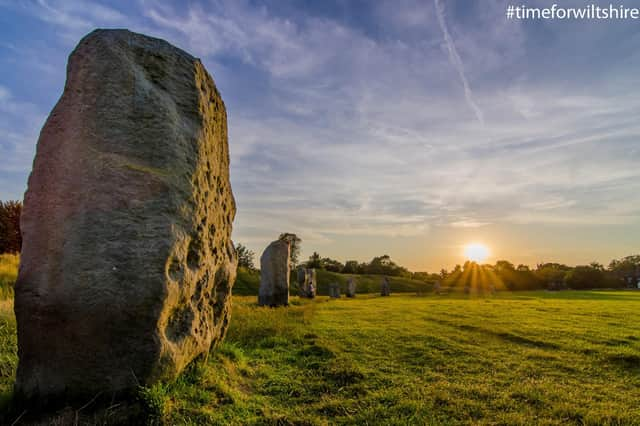Avebury – where the ancient world meets the present


The guide will also point out that the structure was built way before anything was put up at the other stone circle.
Avebury, owned by the National Trust, is a unique place, with plenty to engage the interest of young and old.
Advertisement
Hide AdAdvertisement
Hide AdThere are the stones from prehistoric times and there is the olde worlde village with the impressive Avebury Manor, an amalgam of different historical periods.
Let’s begin at the beginning. Avebury seems to have been the focus of religious or astronomical interest for Neolithic and Bronze Age folk who took the immense trouble – and it would have been a hassle without cranes and lorries – to erect the largest stone circle in the world, an even bigger ditch around it, a massive henge bank and burial mounds.
Why they did it no one really knows. Was it a holy site? Was it a big calendar to help them predict the seasons? Some have suggested it was a refuelling station for UFOs!
Actually, it isn’t accurate to say there is a stone circle at Avebury because there are actually three. A big outer circle wraps around two smaller inner ones.
Advertisement
Hide AdAdvertisement
Hide AdAll of the original stones aren’t there anymore – some are in local buildings – but archaeologists have been hard at it determining where they stood.
You have the choice of wandering freely around the stones or you can sign up for one of the tours with a National Trust guide who will go into detail about the history of the structure, its link to surrounding monuments and the ‘rediscovery’ of the ancient feature by John Aubrey in the seventeenth century and who set about mapping it in some detail.
King Charles II took an interest in Aubrey’s work and encouraged him to explore more, prompting a detailed study starting in September 1663.
Sadly a number of stones had been knocked over by Christians who had regarded them as a pagan insult to their beliefs.
Advertisement
Hide AdAdvertisement
Hide AdThis wrecking infuriated antiquarian William Stukeley who, in 1719, began researching the site, which resulted in a book called Abury, a Temple of the British Druids in 1743.
It would be fair to say that Stukeley took a leftfield view on historical accuracy to justify his ideas about Avebury’s history.
It sparked a disagreement with Reverend Thomas Twining who had his own book out called Avebury in Wiltshire, the Remains of a Roman Work.
Aubrey said the stones were put up by the Druids, Twining by the Romans. Both were wrong.
Advertisement
Hide AdAdvertisement
Hide AdResearch continues even today but it was archaeologist Alexander Keiller who saved Avebury for posterity by buying it and it is in his honour that the village now houses the Alexander Keiller Museum containing artefacts and a fascinating history of the site.
The National Trust has done a great job looking after Avebury, and that isn’t just with the stones. The village itself and its 16th century manor house and garden are cared for with great dedication.
Wandering around the streets of the small village is like taking a trip back through time, with just a token nod at modernity.
But there are still shops where you can buy food, second-hand books and all manner of new age items ranging from crystal skulls to angel cards.
Advertisement
Hide AdAdvertisement
Hide AdThe National Trust has a pleasant cafe should you fancy a sit down.
Avebury Manor is a stunning edifice. It stands defiant, suggesting in no uncertain terms that it will still be there centuries after all our modern houses are long gone.
It has a sense of honourable decay about it.
The manor house has been revamped over the years by its inhabitants and has aspects of different styles – Tudor, Queen Anne, Georgian, Victorian and 20th Century.
Wandering around inside takes you back to the lives of folk in years gone by. Conservators have done a fantastic job with the interior and you can only admire their attention to detail and desire for historical authenticity.
Advertisement
Hide AdAdvertisement
Hide AdThe furniture and fittings have been carefully chosen to tell the building’s long story. It is a great history lesson.
Avebury Manor Garden is arranged in what the National Trust website describes as “a series of ‘rooms’, each with a different character”.
The garden is wonderfully peaceful and you can spend a lot of time just wandering around and discovering what it has to offer. In the Spring and Summer it is a riot of colour and scent.
All in all, Avebury is an exceptional place to visit, perhaps as part of an exploration of Wiltshire as a whole. You will step back into the very beginning of our island’s history.